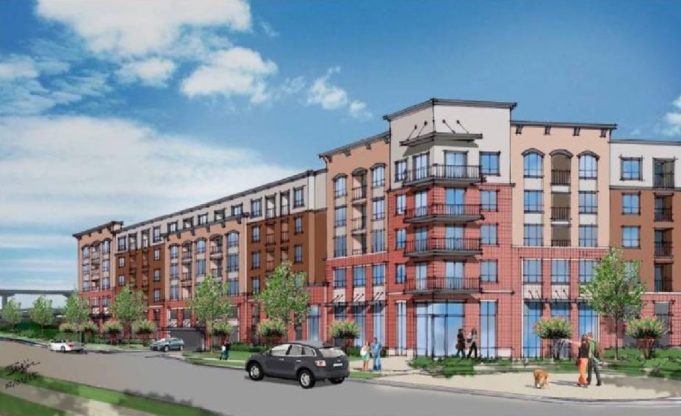Recently, I used this space to take issue with some elements of the aesthetics of large apartment developments. To recap: In trying to wrap around and disguise their equally large parking garages, designers often resort to making the facades a busy jumble of materials and design touches to add “interest,” and they are often so large as to consume multiple blocks and impede pedestrian mobility.
After doing some more thinking on the subject, I’d like to turn away from their outward appearance and instead talk about some issues with what’s on the inside, and how it relates on a conceptual level with the redeveloping urban neighborhoods they’re being built in.
When one looks at such developments, there is very little variety in the end product, apart from the visuals. Virtually all of these developments are targeting the “luxury” market, and the list of amenities they’re stacking up to reach that market barely changes from project to project. Virtually all of these developments have granite countertops and quasi-exotic trim pieces. They have clubhouses, fitness centers, swimming pools, concierge services, outdoor grilling pits, and a laundry list of other such features, and seem to trend towards larger square footage. They’re all more or less the same, once you look past the exterior color and material.
I think that’s a shame, and it feels rather shortsighted of developers and financial institutions. By constantly targeting only the high-end of the rental market, these projects are adding hundreds of units that are outside the price range of the working class: the artists, musicians, and the small business owners who are the ones we want populating areas like this to give them a unique character, not to mention squeezing availability for lower-income residents.
What’s worse is that many of these “amenities” used to market these developments are unnecessary and run counter to the entire point of mixed-use urban neighborhoods. A fitness center and clubhouse may make sense when building apartments in the suburbs, where everything is isolated from everything else and nobody can effectively walk to things, but they are pointless at best and harmful at worst in an urban setting. Why build a fitness center when one can go to the gym down the street, or simply walk and bike more? Why build a clubhouse when there are five bars and pubs within walking distance where the whole neighborhood gets together? Why compete with the local businesses that help make the neighborhood what it is, and why spend money on building them when you could add more units – or reduce the price of the rest of them?
In many ways, these sorts of developments feel trapped between being the good urban neighbors they should be and the self-contained suburban pods they used to be. While I’m happy to see hundreds of new units being added to our central city, I can’t help but wish there were ways for developers to build more affordable units, and ones that fit in better with these sorts of neighborhoods. Perhaps there’s an opportunity for new, more open-minded developers and lenders to address these other under-served parts of the market and carve out new niches for infill development.













I’m baffled by your statement that it is “artists, musicians, and the small business owners who are the ones we want populating areas like this” [and not high-end clientele]. Who is the WE in that statement?
The people living and working in the neighborhoods he’s talking about. I know I agree, I’m part of the “we”.
AutoTune46: So what do you tell those who are less welcome in the neighborhood? “Your kind aren’t welcome here”? Just sayin’.